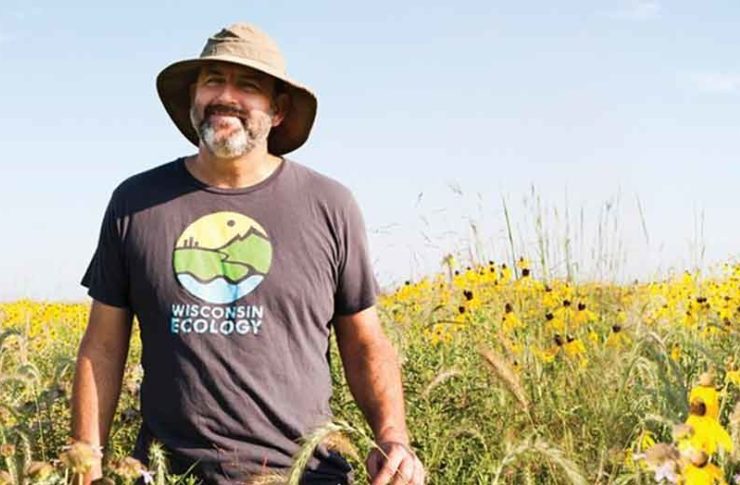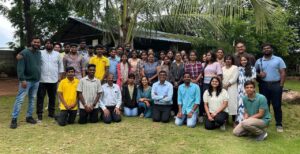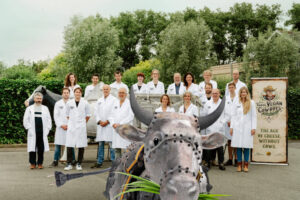A newly formed collaborative group housed at the University of Wisconsin-Madison (UW-Madison) is hoping to make it easier for US cattle and dairy producers to beef up their grazing management while promoting perennial grasslands.
Known as Grassland 2.0, the project brings together UW-Madison researchers, state and local agency staff, milk and meat processors, citizen groups, and other farmers. It is hoping to create a future of profitable, productive farmland that also provides many of the benefits of the region’s original prairie such as clean water, healthy soil, biodiversity, and resilience to extreme weather.
Funded by a grant from the US Department of Agriculture’s National Institute for Food & Agriculture, it puts these outcomes in contrast with a series of current market conditions that Grassland 2.0 identifies as hamstringing many farmers’ efforts: low commodity prices, extreme weather events, rising production costs, and limited processing and marketing options.
“We need to invert the paradigm from one that is dominantly based on grain to one that is dominantly based on grass. That’s not to say we don’t need any grain but we certainly need less of it,” Randy Jackson, professor at UW-Madison and project lead, told AFN. “Our notion is that agriculture should be built on the image of the original prairie.”
Jackson describes our current grain-based model as extractive in that it is based on soil disturbance. Any time the soil is disturbed, it cracks open the nutrient cycle in harmful ways, he said.
“Even with cover crops and other conservation measures that are meant to stop the bleeding, annual crop systems are inherently leaky with respect to soils and nutrients. Cover crops don’t stop it the way grasslands can,” Jackson said. “They can not only stop the bleeding but literally restore and heal the functionality of the land.”
Well-managed grasslands offer reduced soil erosion and nutrient runoff, carbon sequestration, increased water retention, reduced flooding, and more habitat for wildlife like native pollinators, trout, and birds, according to Grassland 2.0. They also offer an opportunity to produce meat and dairy products with the use of carefully managed herds to maintain the grasslands, Jackson added.
So why aren’t more producers embracing grassland agriculture? The answer isn’t agronomics.
“The impediments are more social, political, and to some extent economic. There’s been this enormous push by our land grant universities and scientists generally towards modernization,” Jackson said. “There’s this notion that grazing is what grandma and grandpa used to do. Why would we do that when we have all these modern approaches to producing milk and meat?”
The other elephant in the room is the way that US federal policies subsidize grain production enormously, he added.
Some producers simply have trouble switching from what Jackson described as a “cookbook recipe” take on farming, to a holistic approach that requires constant observation and tweaking.
Part of what Grassland 2.0 plans to do is convene place-based workshops called learning hubs for farmers, ag consultants, and ag retail salespeople. Each hub will focus on small-scale changes around creating new supply chains that are tailored to each ecosystem.
“There might be an opportunity to build out a niche cheese sector that’s based on terroir – this idea that this cheese comes from this place,” Jackson said. “That might work in one place and not so well in another, but the other place might be more about grass-fed beef and its benefits to human and ecosystem health. It’s about identifying what’s possible in these various locations.”
Financing a return to grassland agriculture
Alongside the cultural roadblocks, shifting away from grain-based production to grassland has a series of financial challenges – especially when it comes to conventional financing tools.
The upfront costs of implementing a grazing system can include miles and miles of cross-fencing to separate pastures, water systems to ensure animals have access to water where they need it, new equipment, reseeding pastures, and a lot of self-education.
To address the economic challenges of entering and adopting grassland management, Grassland 2.0 is pursuing a few different avenues. It’s working to expand the market for grass-fed meat, identifying policy tools that facilitate managed grazing and perennial land cover, and bringing together different partners at local and regional levels to find more opportunities to adopt grassland agriculture.
It’s also working with the newly-founded Green Grass Financing Facility (G2F2), which will help explore financial support for grassland ag transitions.
“A conventional bank could give a farmer a loan to adopt a new grazing system, but the farmers and ranchers we have talked with to date have expressed that their capital providers were unable to assist in these situations,” David LeZaks, senior fellow at Croatan Institute, told AFN. LeZaks is involved with getting G2F2 off the ground.
“Many of the agricultural bankers, especially in the Midwest, are most comfortable lending within the dominant paradigm: conventional corn and soybean rotations along with confinement livestock. Understanding the economics of what are now ‘alternative’ systems can be out of reach for some banks or bankers.”
G2F2 will start by identifying the financial and non-financial needs across supply chains during the transition to more perennial and grass-based landscapes, which span from farmer to processor to brand, and beyond.
It’s also hoping to approach capital support with a different lens compared to conventional banking. One of the deliverables for the Grassland 2.0 project is identifying investment opportunities and the incentives that are needed to encourage more grassland-based production.
“Many financial tools used today incorporate a very limited scope of ‘value’ produced by farmers and ranchers. While much of the value is positive, there are negative externalities that are rarely accounted for,” LeZaks said.
“Applying a more holistic, true cost-accounting lens to the next generation of financial mechanisms will help to provide more appropriately structured capital as these transitions are navigated.”
Grasslands are gaining attention
As more discussions take place around the ability to sequester carbon through grazing management and other agricultural practices, grasslands are gaining more attention.
Burger King, Cargill, and the World Wildlife Fund are working with ranchers in the US’ Northern Great Plains on a three-year initiative that will convert cropland to diverse grasslands through a restoration program. The goal is to return 8,000 acres of marginal cropland throughout Montana and South Dakota to native grasses. Once established, beef cattle will be grazed throughout the reseeded grasslands to maintain them.
In 2018, Dane County, Wisconsin launched a pilot program offering payments to farmers for converting to grassland-based farming systems. This program was considered so successful in its first year that its budget has more than doubled since.
Cargill and Walmart both recently announced sweeping pledges to make their businesses more ‘regenerative.’ Cargill wants to help farmers turn over 10 million acres to regenerative ag practices by 2030, while Walmart is targeting zero emissions by 2040 and hopes to restore at least 50 million acres of land and one million square miles of ocean by 2030.




